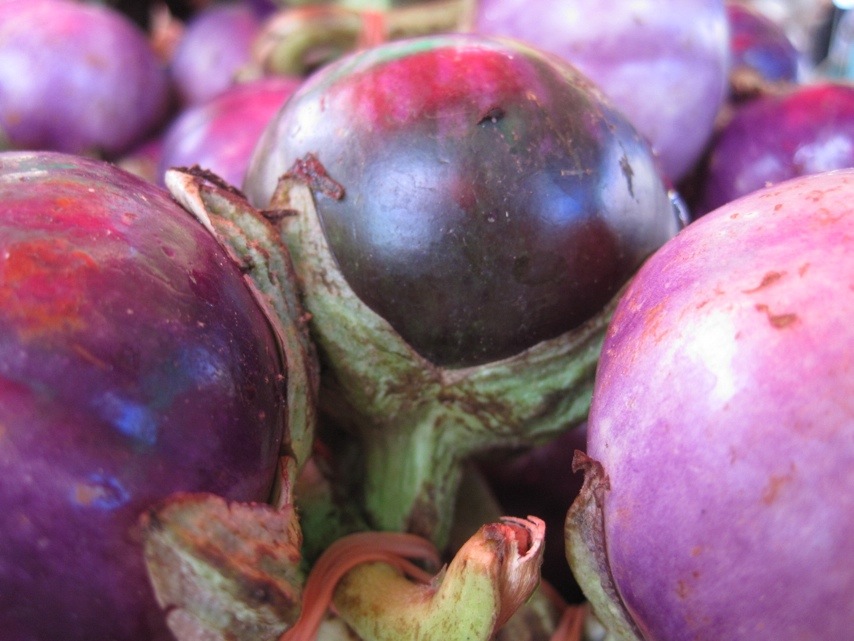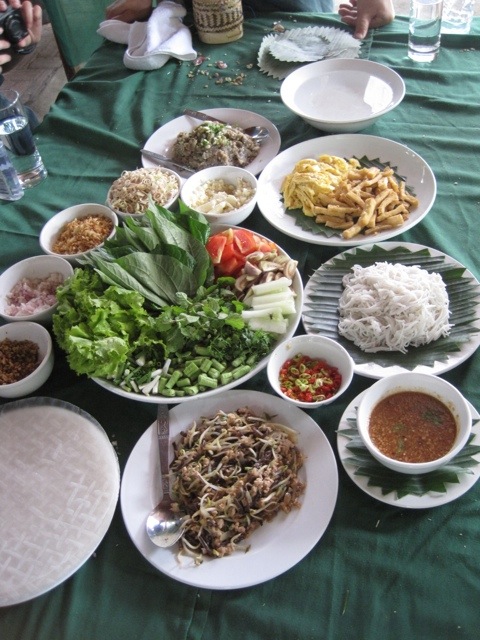I’ve cooked a lot of Thai curries before, including making pastes, but was keen to learn more, get some ideas and of course, spend a day cooking. Something which one doesn’t get to do a hell of a lot while on the road.
The course I chose was one outside of Chiang Mai, on a small farm where they grow some of the ingredients you use in the recipes. After visiting a local market to learn about some of the main ingredients such as pastes and rice and the staple flavourings in Thai food (fish sauce et al) we were shown around the garden to see things like lemongrass, kaffir lime plants, chilli plants, basils and papaya growing.
We then got stuck into making a curry paste (I made green) and talked through the curry recipes, which we all did with no problems. I then made papaya salad, tom yam soup, pad Thai and banana in coconut milk. The course was made all the better by out highly enthusiastic chef. Joking and laughing the whole way through, everyone thought he made it a lot of fun.
Few things I learnt:
– orange chills are the hottest. Green ones are more bitter and the seeds aren’t fully grown and the flavour hasn’t developed, while red chills are less hot because they have sweeter flesh and the flavour has started to mellow.
– you can replace green papaya with carrot as it has the most similarities, texture and flavour wise
– of the chilli pastes, green is the hottest as it is freshest; red is milder as dried chillies are used; yellow is made with turmeric. Massuman has bay and clove in, which gives it the more mellow rounded flavour, while Penang paste has peanuts in.
– using coconut milk, one should use 60% cream with 40% water for curry; 50% cream for soup; and 100% for desserts
– fresh green coconuts are where we get coconut juice, but coconut cream is made from pressing the pulp of brown (older) coconuts
– there are two types of rice: sticky rice and everything else! Sticky rice starts off very white (is dryer and more starchy) and becomes translucent when cooked; jasmine & other long grain rices starts more translucent (not dry; contains more sugars) and is white when cooked. Also, when you think about it, if you ask for steamed rice, you get long grain, which is boiled in water, whereas sticky rice is actually steamed. Brown rice is a variety of long grain and simply has more fibre, so takes longer to cook.





Very nice – im expecting some phenomial currys when your back mate!! Loving the look of this one!
Better than Delia Smith’s photos!